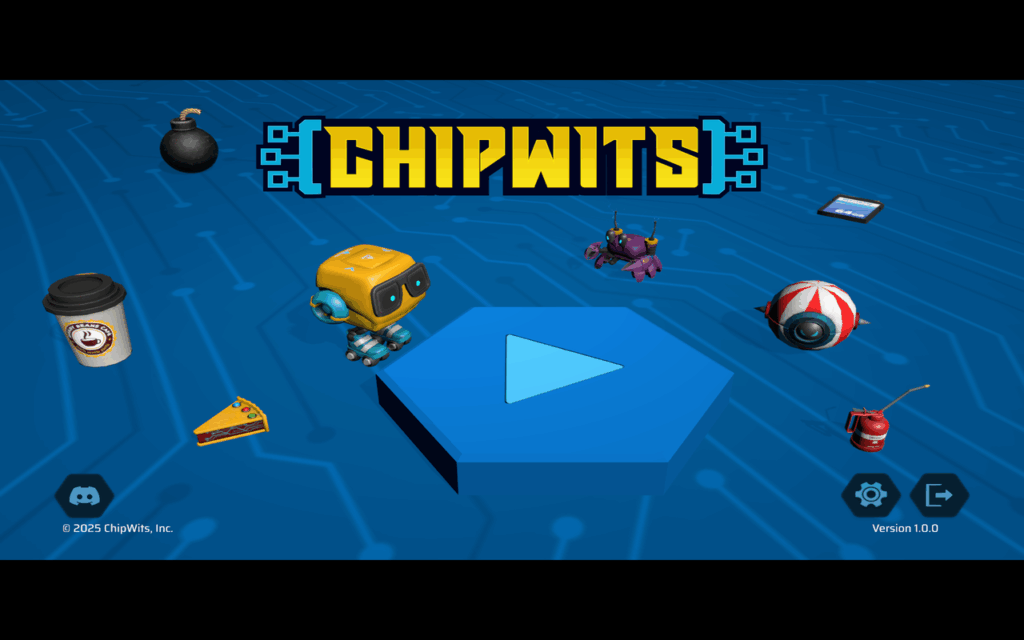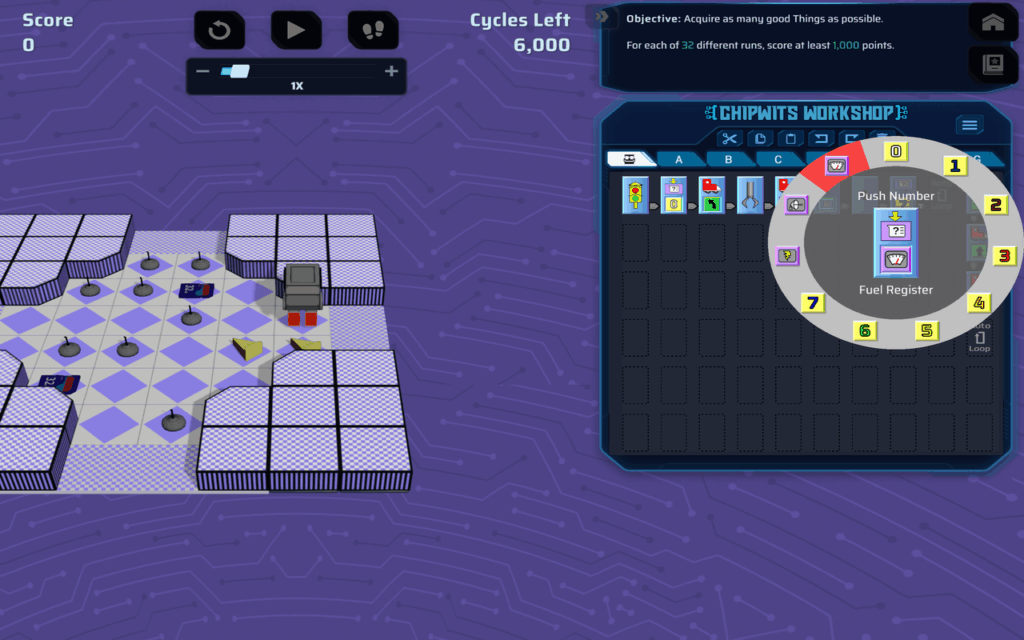Some time ago on Game Developer I did an interview with the creator of the classic Mac, Apple II and C64 programming game Chipwits, who were working on a modernized version. Well their efforts have been released to the public now: Chipwits 1.0 is now out on Steam!

You devise programs using a graphic interface to get a robot character through a maze-like grid world to do various things. The original Chipwits was written for the original Mac, in Forth, with ports for different machines of the time. The new game has a nice tutorial as well as new scenarios, in addition to the scenarios that came with the original game.

The thing I like about Chipwits is, it isn’t always about solving specific puzzles. Many of the maps are open-ended. The robots have a limited amount of fuel, which translates into machine cycles to run your programs. Additional fuel can be replenished by objects found in their exploration, as well as objects worth score, but the objects are frequently randomly placed. These scenarios aren’t about tailoring a program to a specific placement objects, but devising a more generalized exploration routine that can adapt to a variety of placements. There are online leaderboards so you can see how your coding skill compares with that of other players.
Chipwits usually goes for $15, but for launch is currently 10% off on Steam. (Disclaimer: I interviewed the Chipwits people for Game Developer previously, and did a little beta testing, but I bought my own copy of the game for these screenshots. They deserve the money!)
